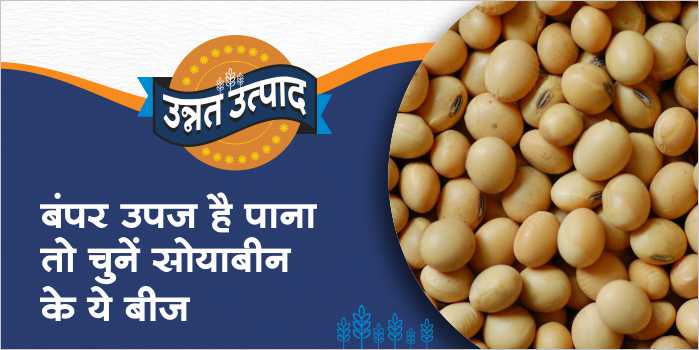JS 2034, JS 95-60
-
Crop maturity period is 87-88 days, yielding 8-10 quintals/acre.
-
This variety resistant for many diseases, suitable for low and moderate rain and light and medium soil,
JS 2029
-
JS 2029 is a new variety developed by JNKVV. This high yield variety’s total yield is around 10 -12 quintals/acre.
-
This variety’s maturity period is about 90-95 days and its 100 grains weigh 13 grams.
JS 93-05
-
Crop Duration- Early maturity, period 90-95 days.
-
Yield 8 -10 quintal/acre.
-
100 grains weigh more than 13 grams.
JS-335
-
Medium duration crop 95-110 days with more branches.
-
Yield 10 – 12 quintal/acre.
-
The weight of 100 grains is 10-13 grams.
JS 97-52
-
Duration medium, 100–110 days |
-
Yield 10 – 12 quintal/acre.
-
The weight of 100 grains is 12-13 grams.
-
Tolerant to diseases and pests, useful for high humidity areas.
JS 72–44
-
It is also an early (95-105) day variety of soybean.
-
Its plant is straight, 70 cm tall.
-
Its yield capacity is 10 – 12 quintal/acre.
JS 90-41
-
This variety of soybean Crop maturity period is 90-100 days.
-
Its flowers are purple in color and 4 grains per pod.
-
Its average yield capacity is 10 – 12 quintal/acre.
Ahilya-3, Ahilya-4
-
This variety’s maturity period is 99-105 days.
-
The average 10 – 12 quintal/acre
-
Variety resistant to various insect-diseases.
For such important information related to agriculture and agricultural products, keep reading Gramophone’s articles daily. Be sure to visit the market option of gramophone to purchase advanced agricultural products. To purchase the above mentioned seeds, go to the market option of the app.
Share










